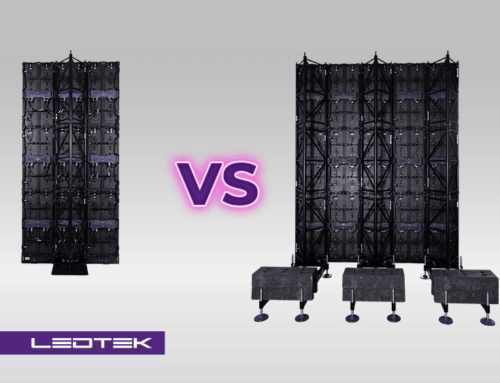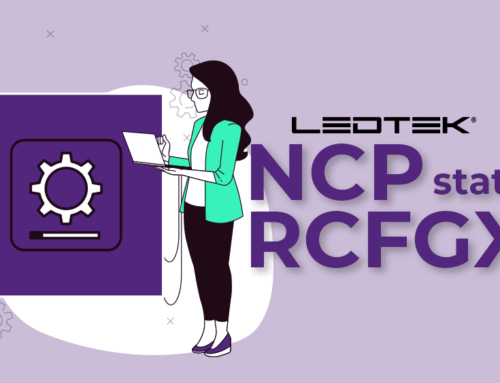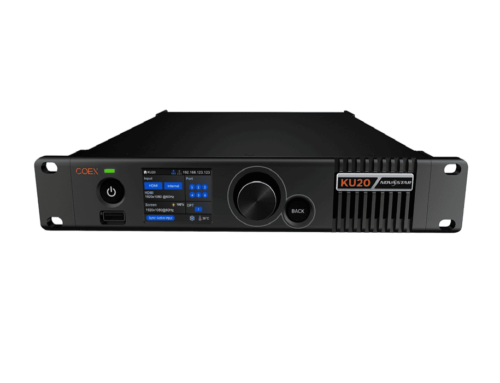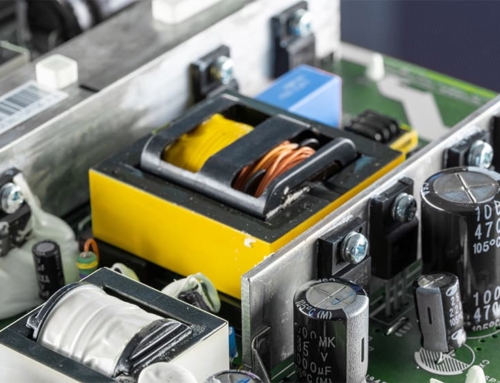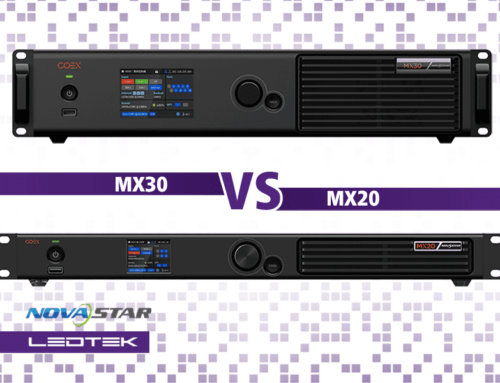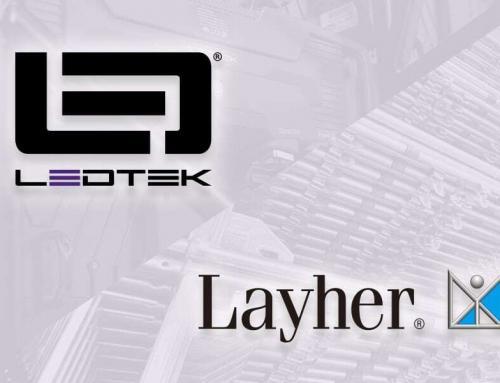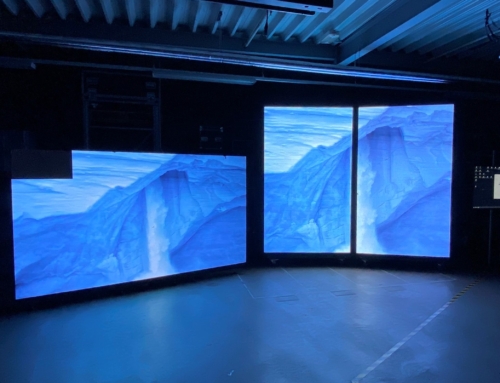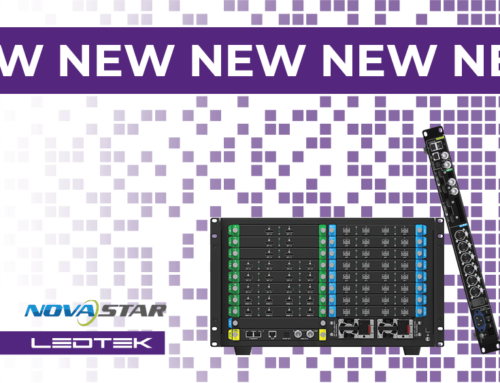The load cell – what is it exactly?
Load cells are technical devices one can measure different vertical acting forces with. In simple terms: the load cell has the function of a scale.

Broadweigh load cell, source: LedTek (E)
Imagine a bigger festival is about to take place and for it an LED wall should be set up. The flying bar on which the LED wall is hanging is attached to the truss with a chain hoist. With two motors a specific system is available which means that it can be determined precisely how much weight acts on the hoist. This would be half of the total weight if the chain hoists were hung up symmetrically.
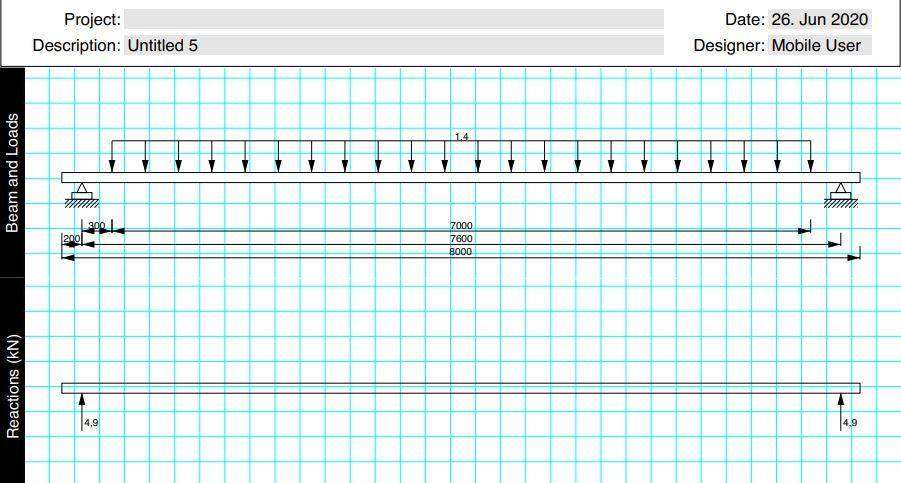
7x4m LED wall with 2 cahin hoists, source: LedTek (E)
Figure with two chain hoists: with a 7x4m LED wall, the linear meter is put weight on with 140 kg/m, this makes a total weight of 980 kg. With two chain hoists, each hoist carries 490 kg with a symmetrical attachment. This means two D8+500 kg are sufficient with this construction.
If a construction with a bigger span width is to be build up, one usually needs more than two hoists. The more suspension points, the less the traverse bends, as the span width between these points is increased. However, with more than two motors, a statically determined system becomes a statically undetermined system. Statically undetermined means that the total weight that acts onto the suspension point can no longer be identified. A theoretical calculation is possible, but this can only refer to the ideal case that does not enter reality. A reason for that is that usually both motors boot up at a different speed, and not synchronically as the ideal would demand. The chain hoist that boosts up faster pulls more weight upwards. If all booted up at the same time, one would be able to calculate how high the load actually is with more than two hoists. This would enable a synchronous drive; however, one would need special chain hoists for that. With most motors such a drive would not be manageable. Furthermore, one has to keep in mind that with such a drive with two hoists around 66% of the total load would fall onto the middle motor. Hence this one is the most endangered when it comes to an overload. This means that with a construction with three suspension points more stable motors will be necessary than with one with only two suspension points.

7x4m LED wall with 3 chain hoists, source: LedTek (E)
Figure with three chain hoists: the chain hoist in the middle is loaded most with a load of 660 kg. A D8+500kg would not be able to hold the load

7x4m LED wall with 4 chain hoists, source: LedTek (E)
Figure with four chain hoists: with four suspension points, both middle motors would be loaded with 410 kg.
At this point the load cell comes into play. It is attached between the chain hoist and traverse and can now determine precisely how much weight acts on which hoist. With this, it can be made sure that the limit will not be exceeded. Thus, load cells provide the according safety and should not be missing in the sector of event and stage technology to grant a risk-free set up.
Broadweigh load cell
The manufacturer Broadweigh has released a new wireless load shackle. It works in contrary to many commonly used load cells by radio, hence without cable. This makes handling especially handy as there is no longer need for cables or a controller that needed to be attached to a computer. The only thing required is the handy gauge. This makes it way more practical and timesaving than the competing products that can not do without a cable. And even a remote monitoring is comfortable possible as it sends the measured data without any problems on a transmission range of up to 800m.
Broadweigh’s load cell still measures with an accuracy of +/- 1% or +/- 25 kg up to 3.25 t.
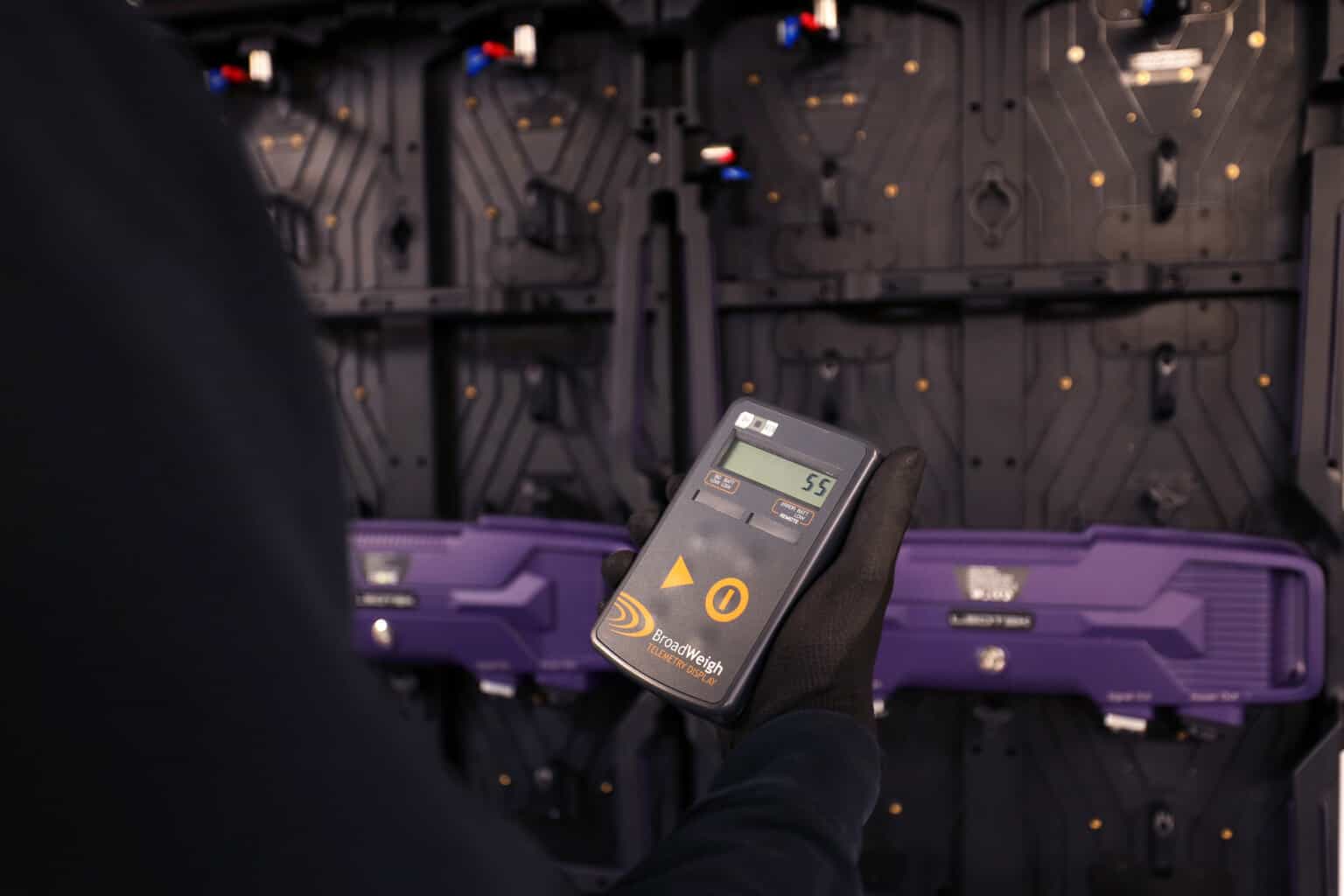
Broadweigh measuring device, source: LedTek (E)
Here at LedTek we are convinced by the Broadweigh wireless load shackle. It is not only simple and quick to use, but also very reliable.
For a 3x2m LED wall a load cell is in general not necessary, but it should be installed with bigger LED walls of e.g. 100 m2 – here the load shackle is essential when it comes to a safe construction.
If you are thinking about purchasing a Broadweigh wireless load shackle, or have questions concerning this product, do not hesitate to contact us. We are happy to answer you any questions concerning these technical devices and would like to share our knowledge with you. You are welcome to give us a call at +49 551 492 493 44 or send a mail to vertrieb@ledtek.de.


